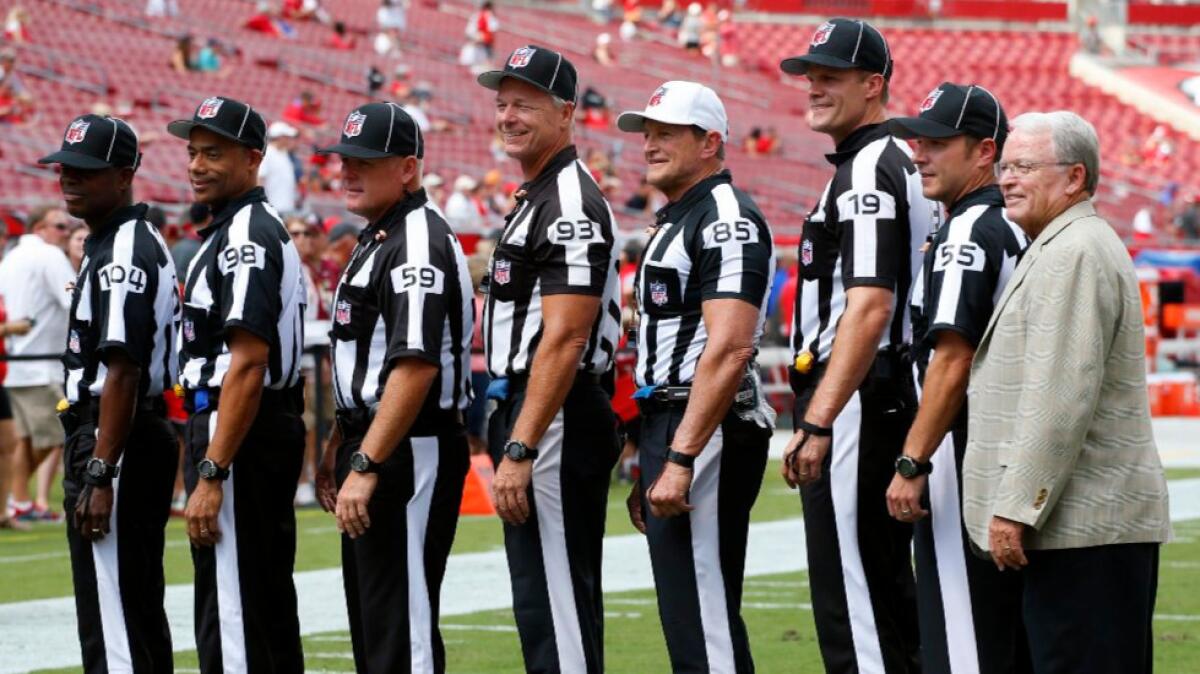Ask Farmer: Why do NFL referees have numbers?

- Share via
Have a question about the NFL? Ask Times NFL writer Sam Farmer, and he will answer as many as he can online and in the Sunday editions of the newspaper throughout the season. Email questions to: sam.farmer@latimes.com
Why do referees have numbers?
Ralph Miller, Fort Collins, Colo.
Farmer: If they’re doing their jobs well, on-field officials will go unnoticed. So it takes a keen eye to spot that the zebras do, in fact, have jersey numbers just like the players. That’s a smaller number on the upper arm, and a larger one on their back, under the letters that designate their position on the field — SJ for side judge, HL for head linesman, U for umpire, etc. NCAA officials do not wear numbers. The jersey numbers for NFL officials are purely for identification purposes, and though there are 117 officials, the jersey numbers go up to 135. There’s no rhyme or reason to the numbering system, unlike how players are limited to a certain range of jersey numbers depending on which position they play. Typically, when an official is assigned a jersey number, he or she keeps it year after year, although occasionally there’s some number swapping. Former referee Mike Carey was No. 94, for instance, but he wanted to be No. 44 to match his number as a college running back. “But the guy who had 44 didn’t retire, he passed away,” Carey said. “So I just didn’t want to pursue that anymore.”
Carey wore No. 94 throughout his career and said he had a special connection with players who wore the same number, typically outside linebackers and defensive ends, among them Charles Haley, DeMarcus Ware, Ty Warren, and John Abraham.
“Invariably, there was this bond that would form between me and whoever wore that number,” he said. “I would joke with players and say, ‘Make sure you represent this number well.’”
::
There are players all over the field, starting two hours before a game and leading up to kickoff. I understand they’re stretching and warming up, but do they really need to do that so early?
Reed Thompson, Delmar
Farmer: The players you see on the field aren’t necessarily the ones you’ll see playing in the game. In part because the collective bargaining agreement limits how much teams can practice, particularly in pads, clubs use that pre-kickoff time to work with players who are rehabilitating from injuries, deactivated for the game, or have been assigned to the practice squad. That’s some of the rare one-on-one time they get.
More to Read
Go beyond the scoreboard
Get the latest on L.A.'s teams in the daily Sports Report newsletter.
You may occasionally receive promotional content from the Los Angeles Times.











